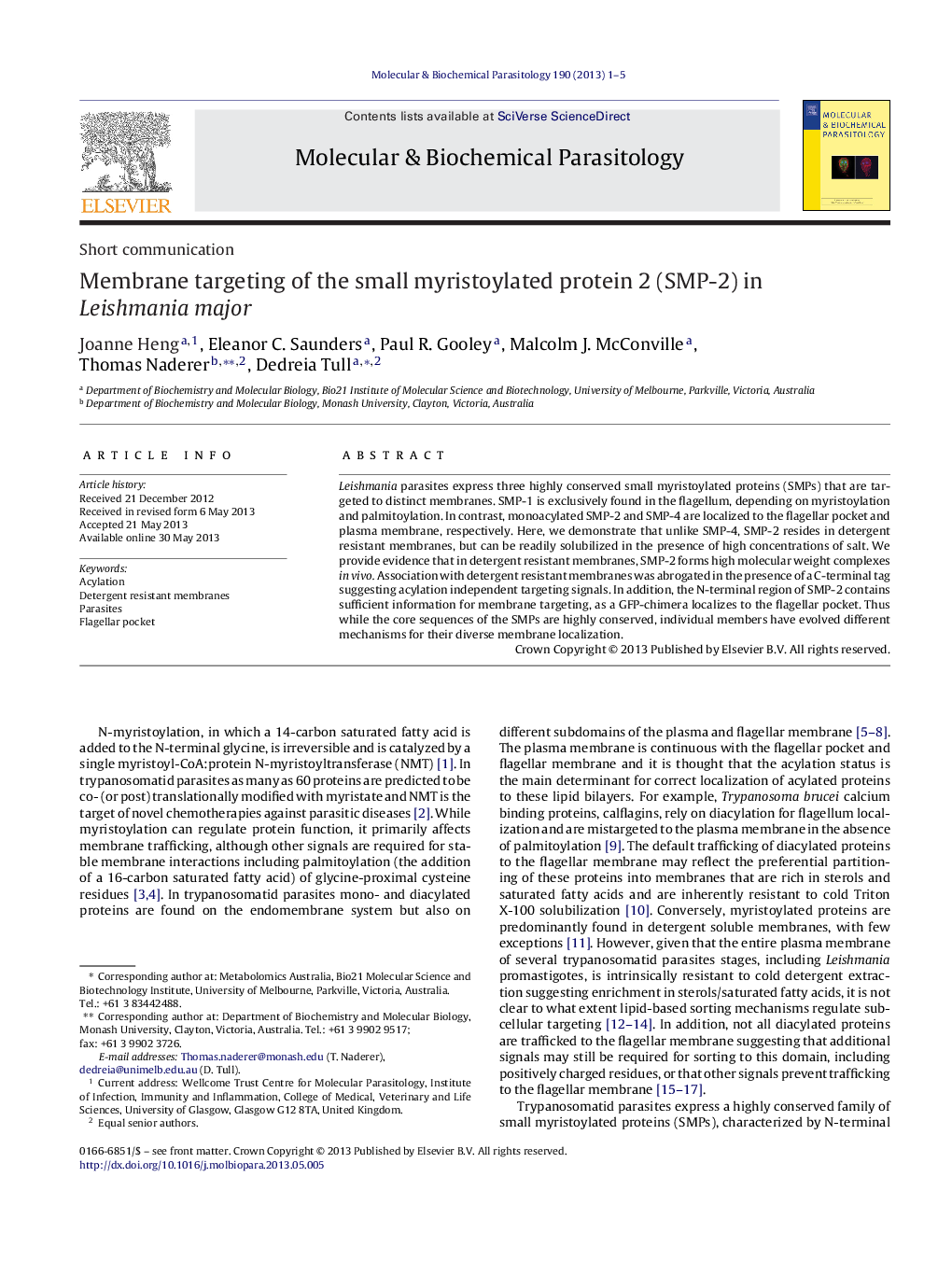| کد مقاله | کد نشریه | سال انتشار | مقاله انگلیسی | نسخه تمام متن |
|---|---|---|---|---|
| 5915486 | 1163300 | 2013 | 5 صفحه PDF | دانلود رایگان |

- SMP-2 resides in detergent resistant membranes.
- SMP-2 relies on ionic interactions for stable membrane interaction.
- N-terminal region of SMP-2 is sufficient for flagellar pocket targeting.
Leishmania parasites express three highly conserved small myristoylated proteins (SMPs) that are targeted to distinct membranes. SMP-1 is exclusively found in the flagellum, depending on myristoylation and palmitoylation. In contrast, monoacylated SMP-2 and SMP-4 are localized to the flagellar pocket and plasma membrane, respectively. Here, we demonstrate that unlike SMP-4, SMP-2 resides in detergent resistant membranes, but can be readily solubilized in the presence of high concentrations of salt. We provide evidence that in detergent resistant membranes, SMP-2 forms high molecular weight complexes in vivo. Association with detergent resistant membranes was abrogated in the presence of a C-terminal tag suggesting acylation independent targeting signals. In addition, the N-terminal region of SMP-2 contains sufficient information for membrane targeting, as a GFP-chimera localizes to the flagellar pocket. Thus while the core sequences of the SMPs are highly conserved, individual members have evolved different mechanisms for their diverse membrane localization.
107
Journal: Molecular and Biochemical Parasitology - Volume 190, Issue 1, July 2013, Pages 1-5